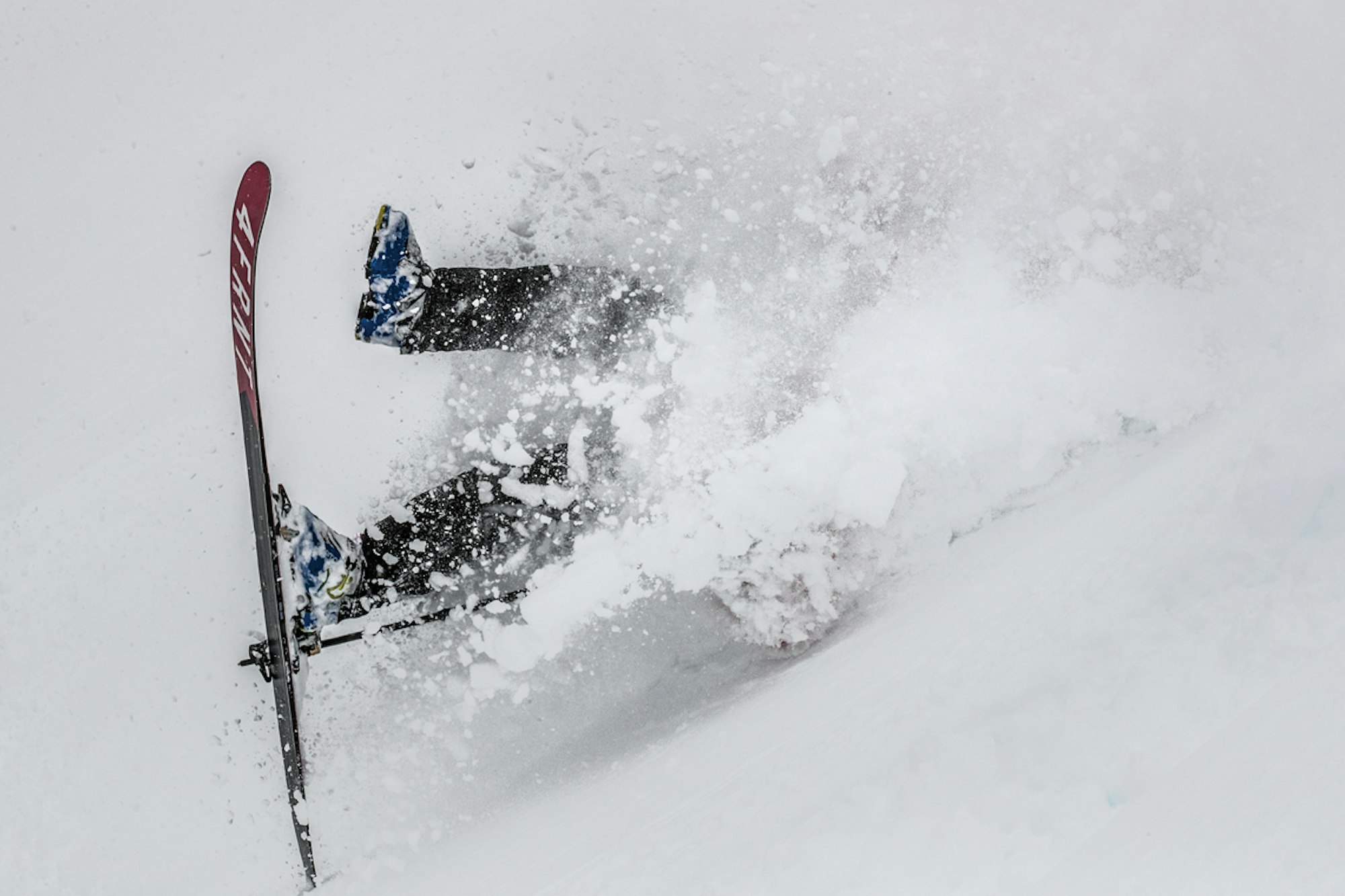The Injured Identity Crisis
When skiing is who you are, what happens when injury takes skiing away?
WORDS • PADDY O’CONNELL | FEATURED IMAGE • JEFF CRICCO
My right knee puffed up overnight like Violet Beauregarde in Charlie and the Chocolate Factory. The emergency room doc stuck a needle into it that was between the size of a toothpick and an elephant’s tusk, and drained enough cloudy yellow fluid to fill up a mason jar. After an MRI, the surgeon told me she was going to use a melon baller to scoop crud from the interior of my knee and the end of my femur, and then use a belt sander to buff out the hole. I knew the last six months of training for my first ultra marathon had just been flushed down the ol’ crapper. But I had bigger concerns. It was November. I am a skier. Place expletive here.
For me, skiing is my chief identifier; it’s who I am, how I see myself in the world on and off the mountain. This injury challenged all of that by hijacking my identity. But this character dilemma is as old as skiing. “When you’re in a neck brace and say, ‘I’m a ski guide’ it doesn’t work out,” my buddy Pete Connolly told me. “I didn’t just lose a thing that I do in the winter. I lost me.”
Pete has skied injury free since he was 18 months old; 30 ski seasons with nothing more than a few bruises and a pronounced goggle tan, including more than a decade of endless winters working as SASS Global Travel’s VP of marketing, mountain operations director and head guide. That is until one night last year when he awoke with severe shoulder pain, no feeling on the outside of his left arm and numbness in half of his fingers.
Since college, Pete has dealt with chronic upper back pain, which turned out to be a compressed disc and a pinched nerve between his C6 and C7 vertebrae. Easy fix, right? Wrong. Pete’s doc performed anterior cervical discectomy and fusion, which involves opening up the front of the neck, removing the compressed disc, separating the C6 and C7 vertebrae, using a piece of Pete’s hip bone to prop up the two vertebrae and securing that piece of bone with some metal and five screws. Woof.
Pete was sidelined for nearly a year, a sacrifice that proved to be more costly than anticipated. “I thought, ‘I’m willing to give up skiing this season for the investment of skiing next winter,’” Pete recalls. “But it was more of an identity loss than a loss of the thing I do. Skiing is the major construct of my life. Of course I missed bouncing through powder and face shots, but I truly missed everything else.”
The physical act of skiing is merely a portion of the identity of a skier. For Pete, one of the most devoted skiers I know, the loss of his place within his social network was most crushing. In the first three months, he could barely walk around his house let alone leave. The loneliness of solitary days spent mitigating pain with time on the couch and blankly staring at a TV screen led to depression. And once he could leave, well, ski town après specials include half price chicken wings and double stuffed heartbreak for the injured. Pete felt driftless.
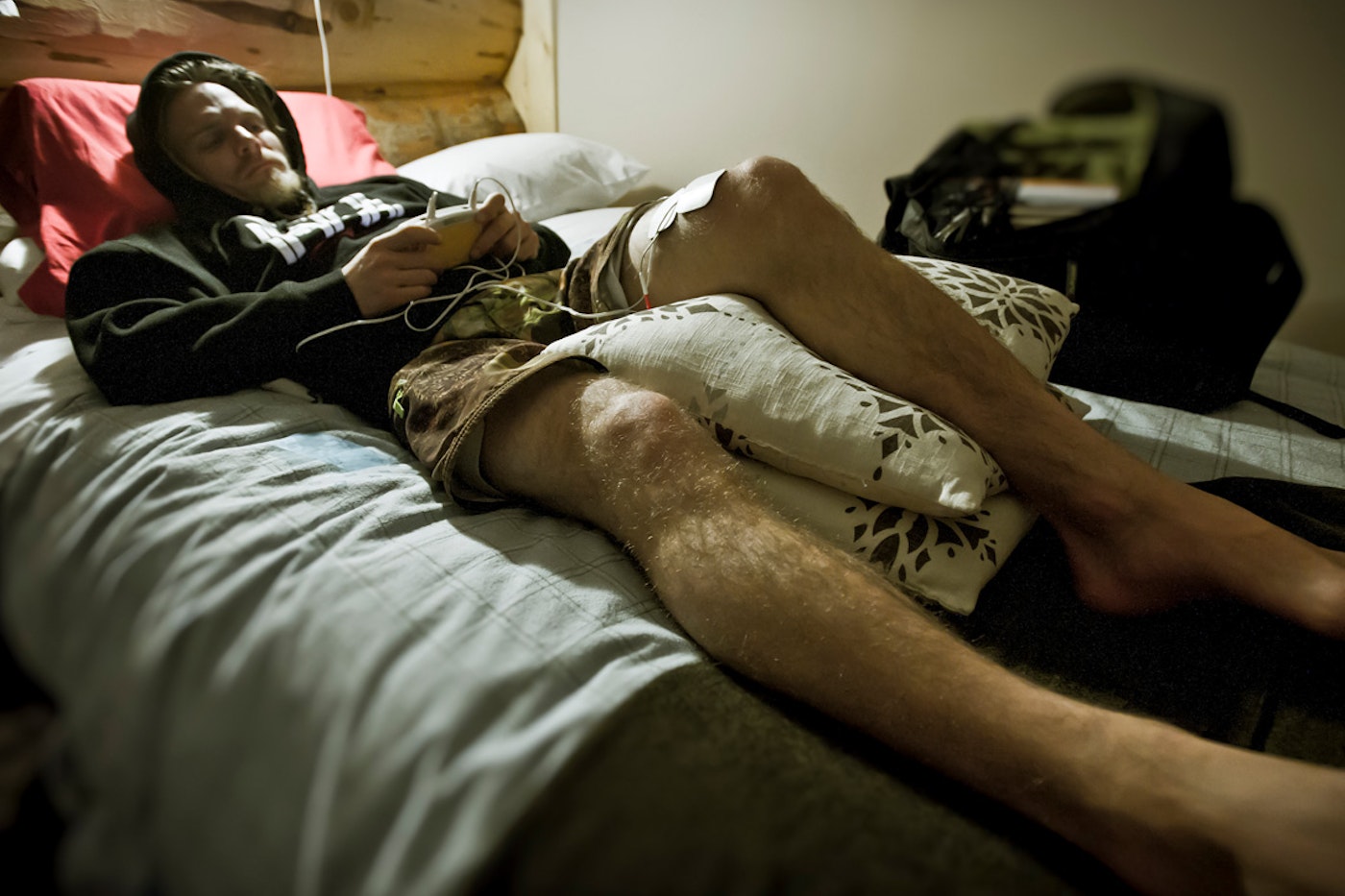
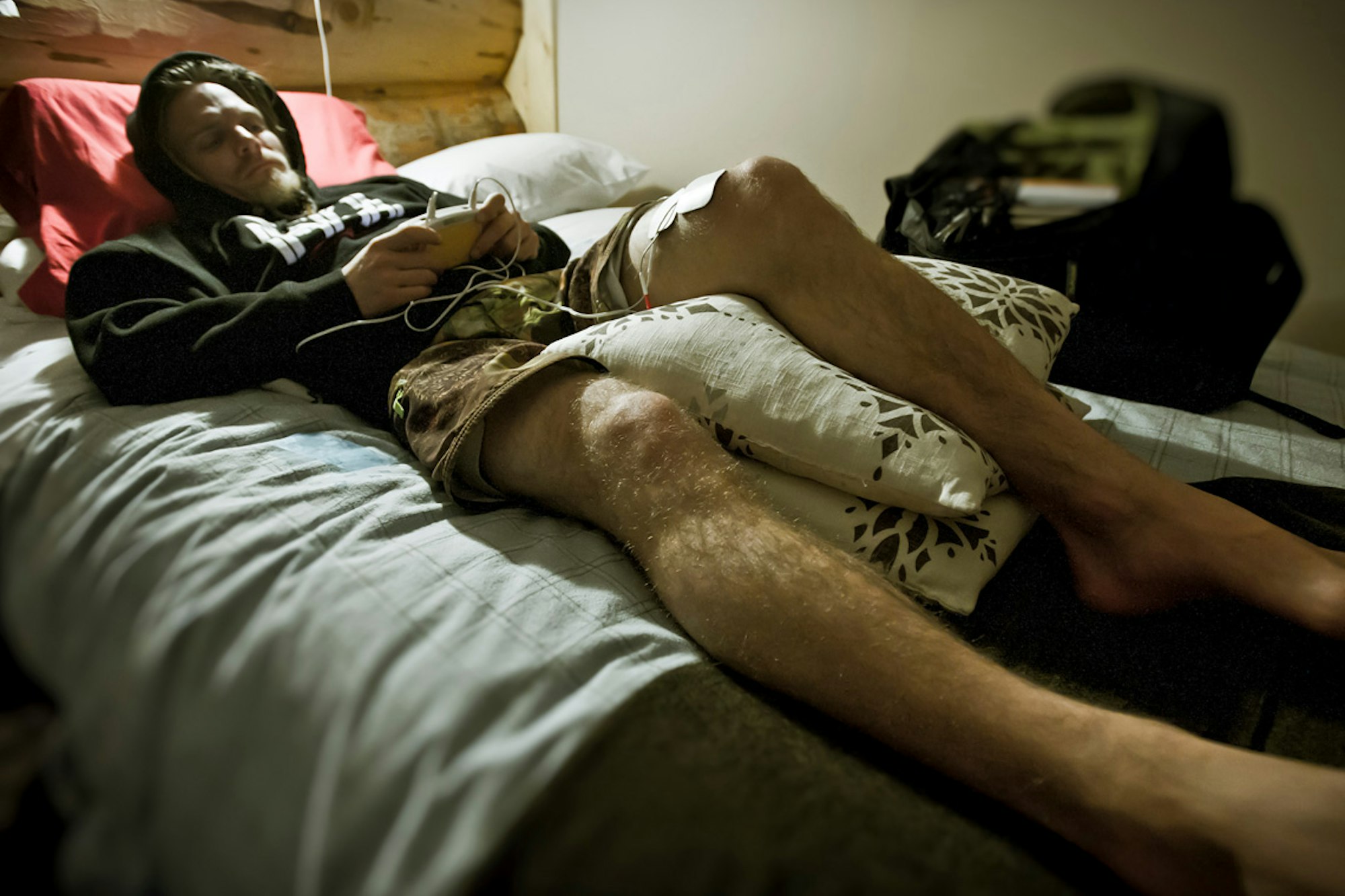
The full weight of eleven months without skiing’s physical, mental and social activity hit pro skier Cody Townsend in, of all places, a mall parking lot. He was 19 years old at the time, recovering from a broken femur in his hometown of Santa Cruz, California. While he was waiting for his then girlfriend to return from shopping, Townsend had an epiphany: “This is not who I am. I am a skier. I need to ski.”
The time away from skiing, and time spent twiddling his thumbs next to an Orange Julius and a Cinnabon, revealed to Townsend that skiing was essential to his identity. “It defines who I am as a person and what I do,” Townsend says. “It’s more than a job or a fun sport I do. I’ve devoted my life to skiing. I lived at home during college and worked 40 hours a week. I didn’t party. I didn’t mess around. I was focused on skiing. It’s the reason why I live where I do now, why I have my dog, how I found my wife…skiing is my life.”
Pro skier Michelle Parker similarly focused her personal and professional life on the sport since her first time on two planks at the age of three. She turned pro when she was only a teenager, and with her storied career has come a string of injuries. At 31, Parker has had five knee surgeries, the worst of which occurred back in 2009 after she dropped a cliff and landed square on a rock. “The hardest and darkest part was probably getting the results back from my MRI,” Parker says. “Sitting in the doctor’s office with my dad, I remember my surgeon listing off all of the ligaments that needed fixing and feeling sick to my stomach.”
After a handful of surgeries, months in the gym and nearly a year off skis, Parker was cleared to ski three runs every few days. “Tears of pure joy slowly made their way from my eyes to the foam in my goggles as I skied my first run,” she remembers. “I didn’t really have words, just a lot of hoots, hollers and incomprehensible sounds of happiness. It was pure bliss… Skiing is much more than a sport or activity to me and I still love the freedom it has given me.”
Maybe it is the freedom, the wind and snow in the face, the undulation and swerves, the feeling of locking into a dance with the mountain. Our love of skiing is surely about the fun and the community, but that’s only surface deep. “It is not just the act of skiing and the friends and culture. It is so much more than that,” Pete told me. “Skiing is in me. It is part of me. And I am part of it.”
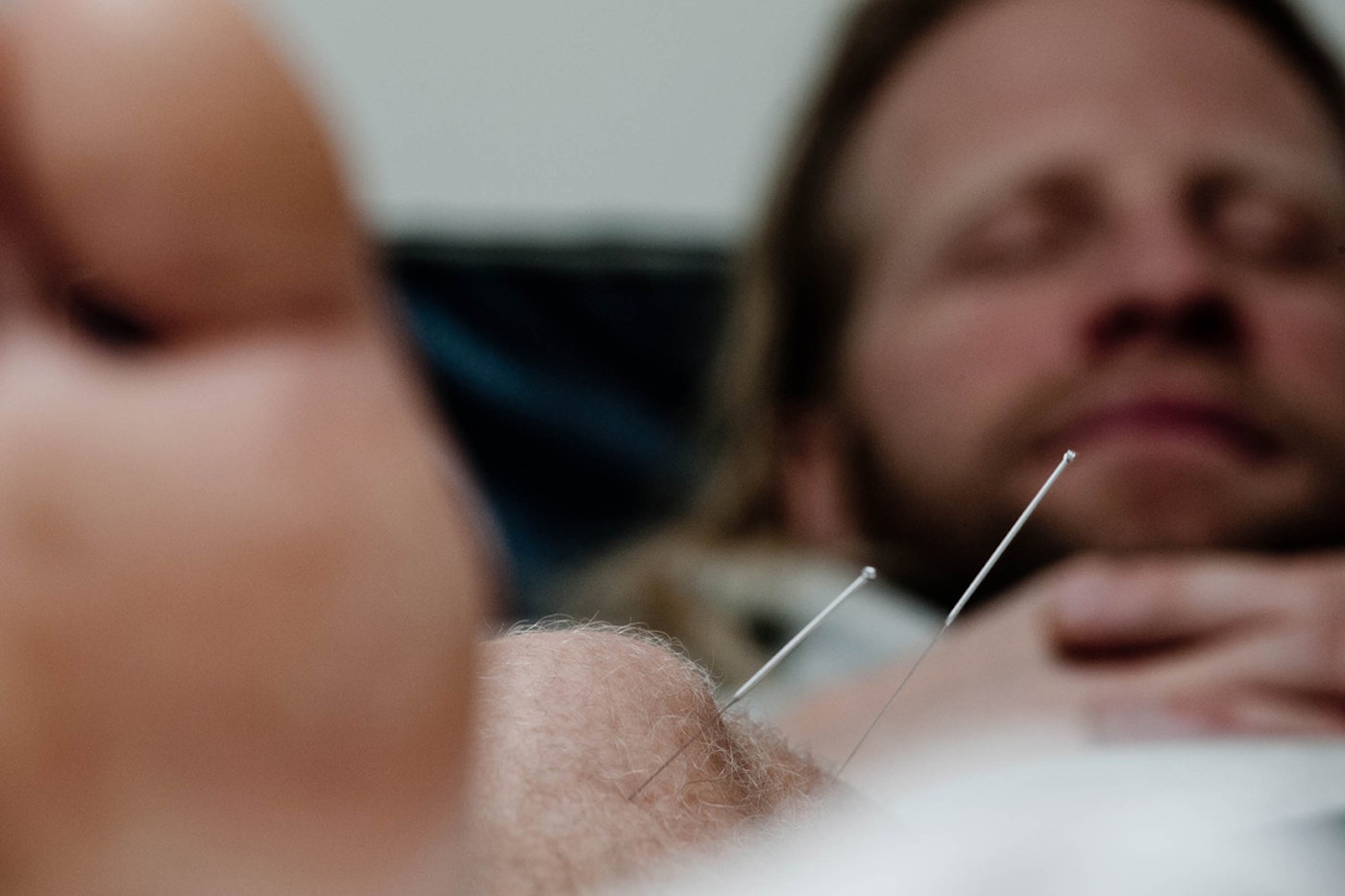
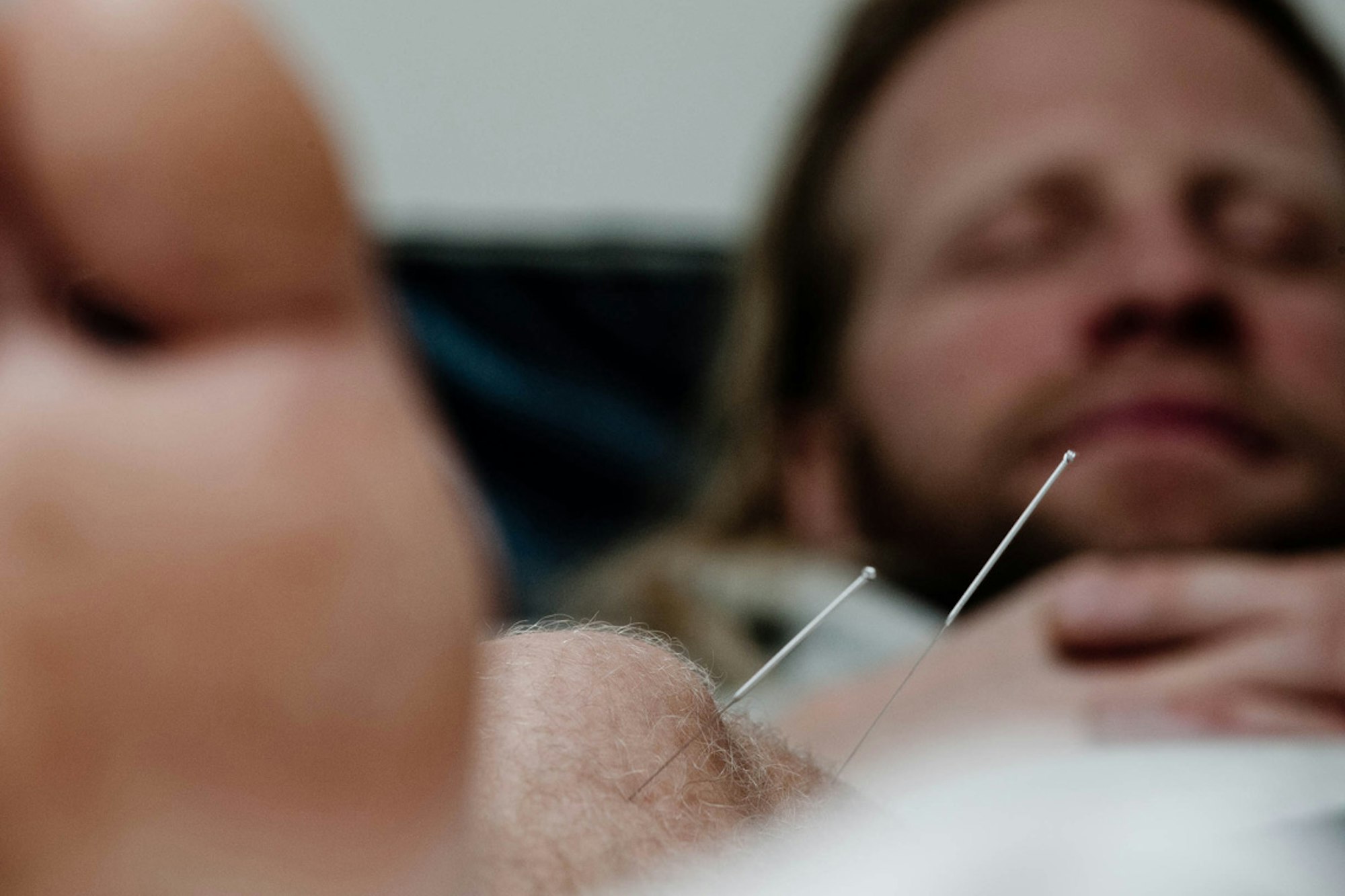
Two months after my surgery, my gal and I sat on the tailgate of my Subaru and booted up amidst the buzz of a powder day in Aspen. Just that week, my physical therapist—who had been kicking my ass with aggressive rehab—looked at my pouting face when I told her of the incoming storm and said, “I think you should ski. You need this, like emotionally.” She was right. Even though we had miraculously rebuilt my atrophied right leg to 90-percent mass and strength in a short time frame, I was tired of the “grandpa exercise” routine—assisted leg and calf raises, ballerina leg points and anything else prescribed by the “Silver Sneaker Exercise Program for Seniors.” I was bored, quick to temper and scared that a ski-less or abridged winter would be aimless and sad. I needed a change. I needed to feel like myself again.
When I clicked into my skis at the top of the gondola, I couldn’t stop smiling and giggling. I was under strict instructions to keep my boots zip-tied, keep my turns to mellow hippie wiggles and only take a handful of blue runs. Fine by me. I was cold again, my mustache was frozen and that remarkable carefree, but laser-focused, moment of a powdery, gliding turn had reappeared. That first run was probably 20 turns long. My gal shimmied next to me and we followed my pal Coop to Bonnie’s—Aspen Mountain’s world famous, on-mountain breakfast spot—for pancakes and coffee with another friend, Meag. The four of us talked about powder days of the past between bites of breakfast, yelled “HEY!” to pals across the room, and laughed our asses off. And that is when I knew I was back. Of course powder helps, but skiing is much more than just skiing.

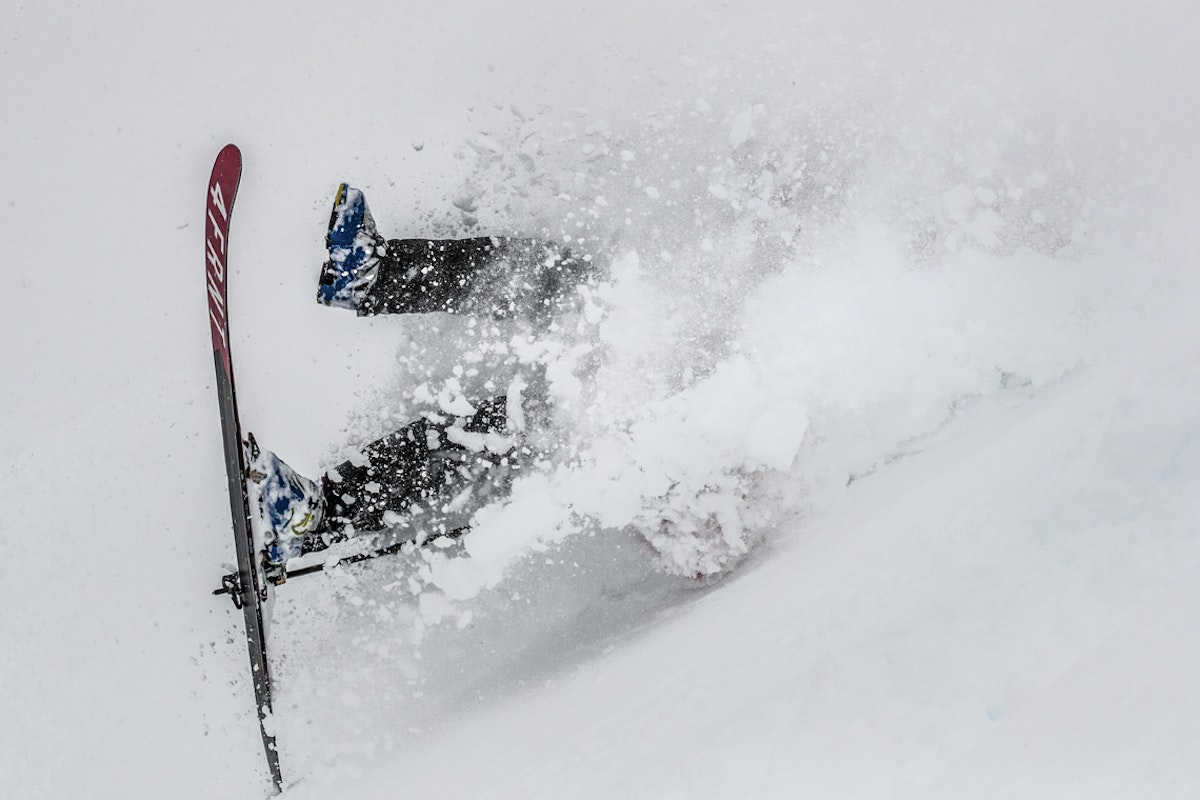

![[GIVEAWAY] Win a Head-to-Toe Ski Setup from IFSA](https://www.datocms-assets.com/163516/1765920344-ifsa.jpg?w=200&h=200&fit=crop)


![[GIVEAWAY] Win a Legendary Ski Trip with Icelantic's Road to the Rocks](https://www.datocms-assets.com/163516/1765233064-r2r26_freeskier_leaderboard1.jpg?auto=format&w=400&h=300&fit=crop&crop=faces,entropy)




![[GIVEAWAY] Win a Head-to-Toe Ski Setup from IFSA](https://www.datocms-assets.com/163516/1765920344-ifsa.jpg?auto=format&w=400&h=300&fit=crop&crop=faces,entropy)


